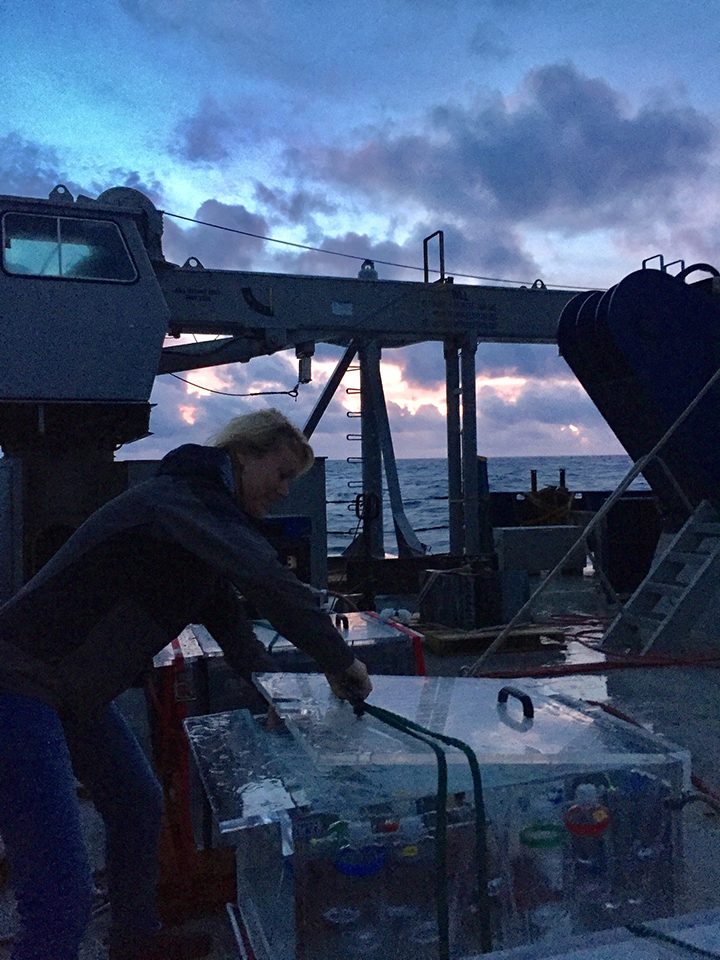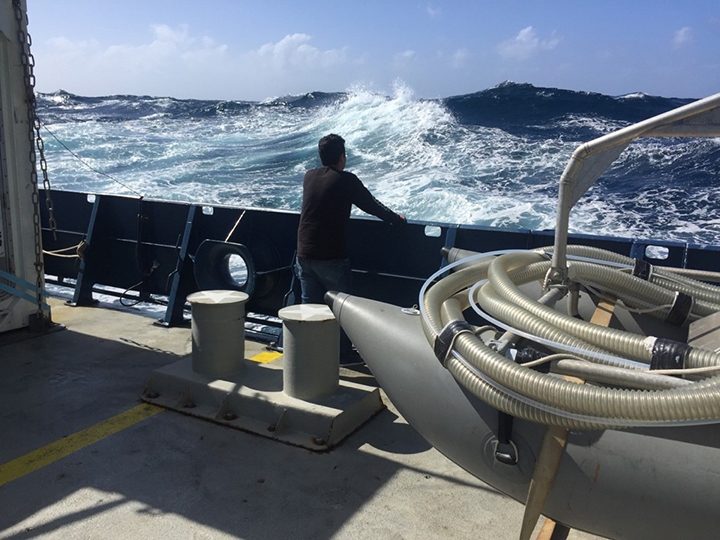At Sea
This is the second of the NAAMES cruises that I have been able to sail. The first was NAAMES #1, November, 2015, and I am lucky to be on this, the last of four cruises that were scheduled for this campaign. Having bookended these cruises, I recognize a couple of changes in both the NAAMES team and myself that have occurred over the course of the campaign.
The NAAMES team: The Chief Scientist and Principal Investigator of this mission, Mike Behrenfeld, built a team of scientists to answer questions about the North Atlantic Bloom and its atmospheric impacts. Many of the team members were unknown to each other at the start of this campaign because they came to NAAMES from disparate disciplines: biological, chemical, and physical oceanography, microbiology, virology, atmospheric chemistry, atmospheric physics, and ecosystem modeling. Annual team meetings encouraged healthy cross-talk. After four cruises and three team meetings, there is comradery built by hard work, innovation, and curiosity. There is respect for the variety of scientific approaches and expertise. This team functions smoothly on the R/V Atlantis. And, perhaps most importantly, shared purpose has gathered momentum leading to new and unexpected contributions to ecosystem science. This team embraces hard work and laughs easily in the labs, on deck, in the galley, and even during daily science briefings. Earlier hesitations have given way to relaxed dialogue and fresh ideas.
I was full of nerves during NAAMES #1. Worried about our instrumentation (i.e., would the turbo pumps survive the incessant bouncing of the ship?, Would the flow controllers function?, Would the automated valves switch properly?). I worried about getting seasick. Worried about the medication to prevent seasickness. Worried about the General Microbiology class I left midterm in the hands of a colleague. Worried about the myriad of “things that need to be done at home.” …..Fast forward….By NAAMES #4, I have developed confidence in the instrumentation (and Cleo Davie-Martin, who is the PTR-MS conductor-extraordinaire). New experiments have been added with each campaign. Turns out, seasickness medication was unnecessary. I am blissfully aware that the internet is too slow to catch up on the news. The sunrise is a priority, even while working*.

*Incubations begin and end at dawn, my favorite time of day.
Leaving worrying behind allows for a certain kind of freedom at sea. Contemplation becomes less constrained. Time allows thoughts to forge new paths through unexplored jungles dotted with boulders to leap and bridge to new ideas. Once in a while these thought-explorations lead to a clearing where I mentally stack stones into a duck or blaze the bark of a tree so that the idea can be revisited and won’t be lost in the weeds. What a spectacular treat to let these thoughts bound along without the daily distractions that I apparently allow to seep in and prevent freedom of exploration. At sea, exploration of ideas is less encumbered by rules of engagement. Perhaps the rarest of scientists are always “at sea,” never dithering with boundaries and are instead free to meander across scales, dimensions, and disciplines, eventually emerging with unexpected and shattering ideas.
For non-sailors, to be “at sea” usually implies confusion or disorientation. As in, “She was at sea with String Theory.” On the contrary, my definition of “at sea” as of NAAMES #4 has evolved to mean freedom of exploration.

Luis Bolaños (Oregon State University, expert in microbial genomics and bioinformatics) at the rail. Where are his thoughts taking him at sea?
Written by Kim Halsey



